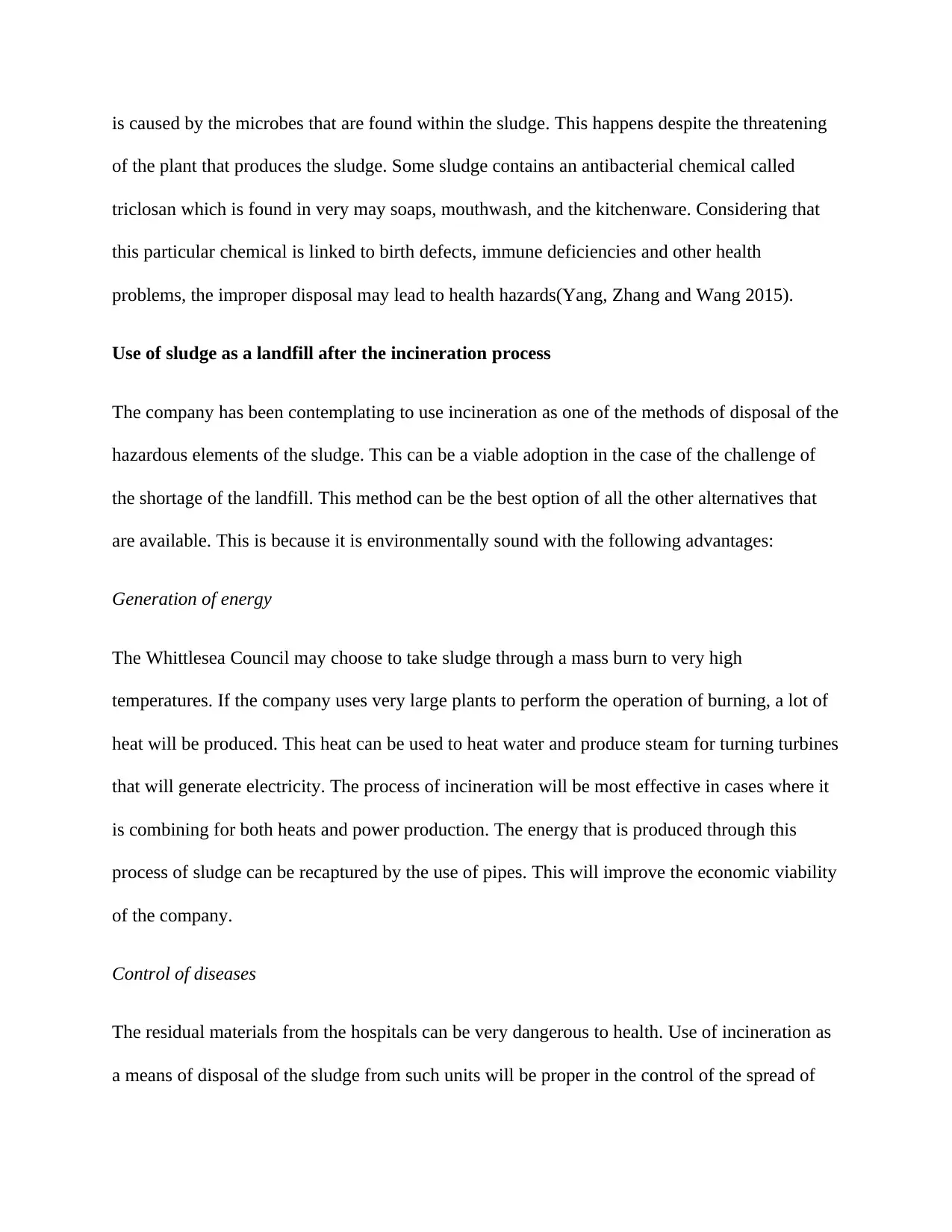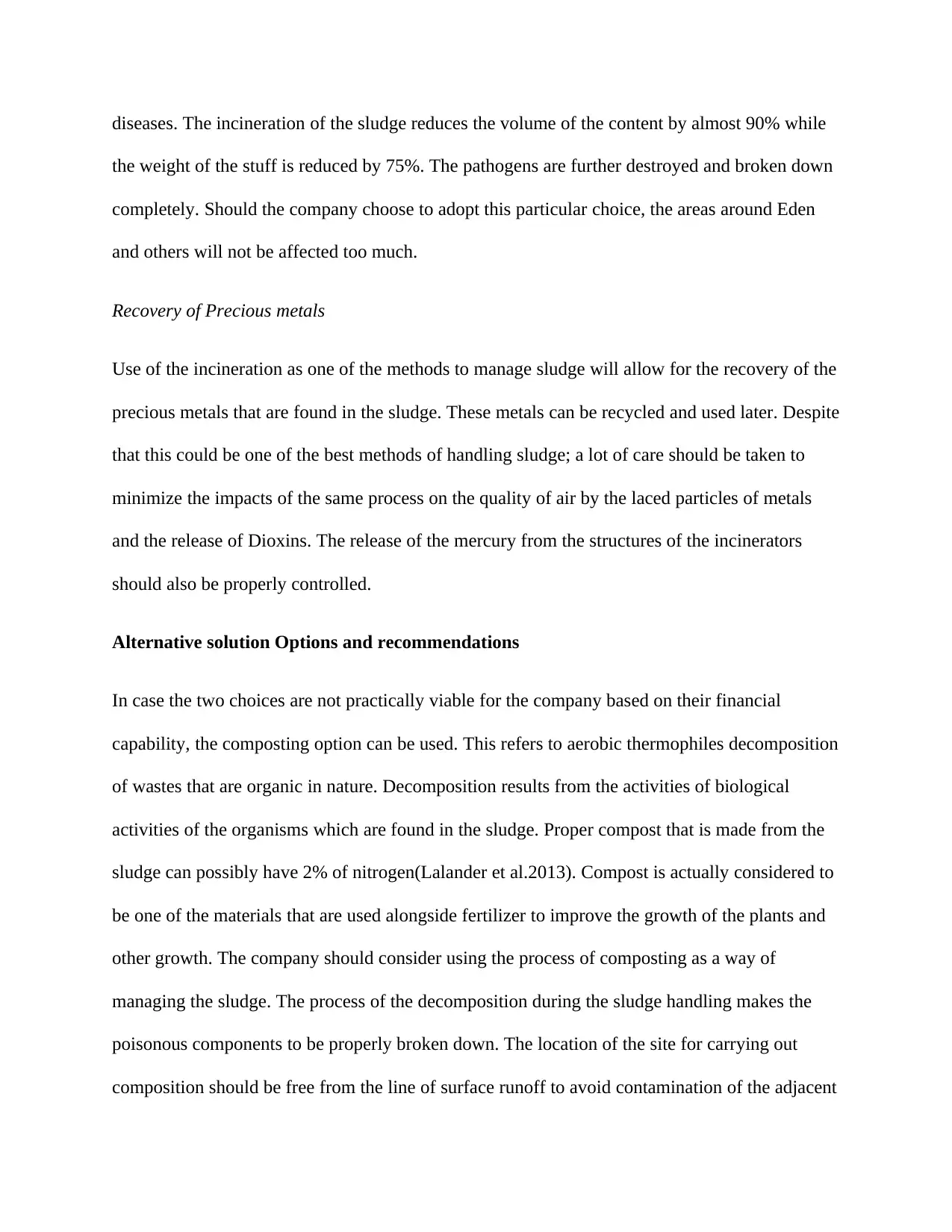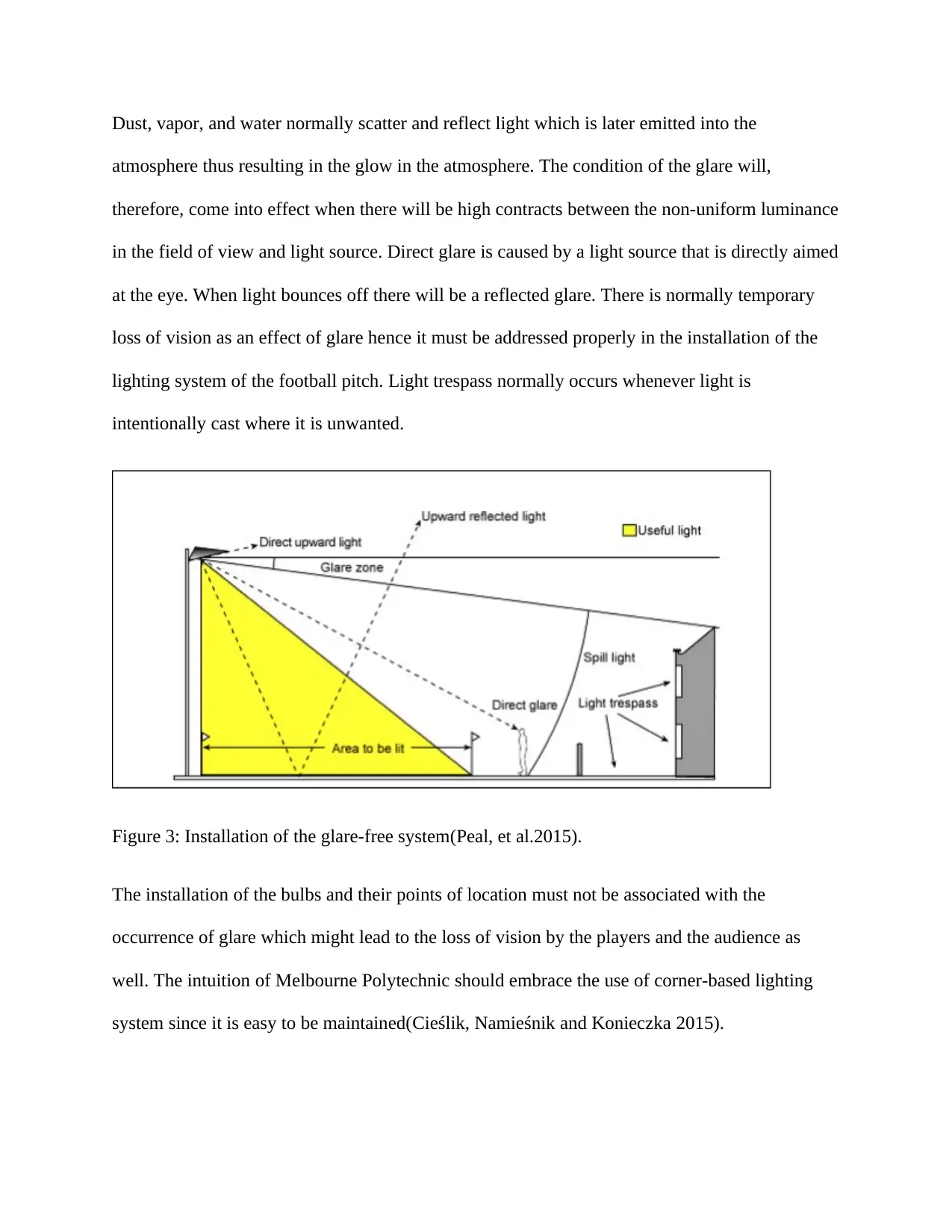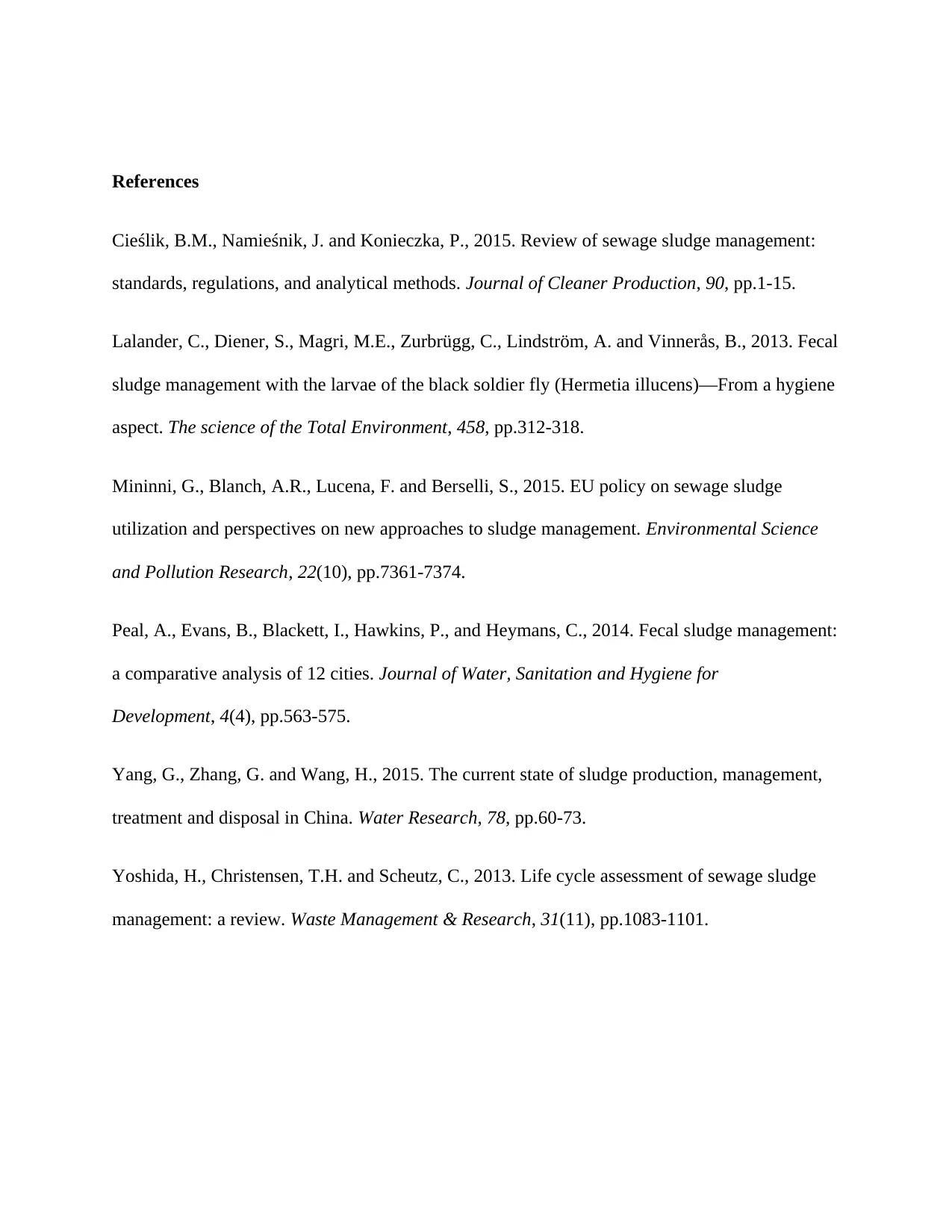Environmental Engineering Report: Sludge and Lighting Analysis
VerifiedAdded on 2023/04/11
|8
|1510
|182
Report
AI Summary
This report, prepared for a civil engineering course at Melbourne Polytechnic (BET202), examines two primary projects: sludge management and football field lighting. The sludge management section evaluates the environmental impact of using sludge for agricultural purposes, highlighting the da...

CIVIL ENGINEERING
By Name
Course
Instructor
Institution
Location
Date
By Name
Course
Instructor
Institution
Location
Date
Paraphrase This Document
Need a fresh take? Get an instant paraphrase of this document with our AI Paraphraser

Project One
Sludge Work
Use of Sludge for agricultural works
Sludge is not just a byproduct of wastes that can be used for the creation of the fertilizer. Sludge
contains very heavy metals, thousands of chemicals and bacteria like staphylococcus.Sludge
actually begins as manufacturing chemicals, human wastes, and landfill runoff. It is obvious that
anything which fills down the drain is difficult to know its content. The sludge will definitely
infiltrate the food chain via the livestock which tends to ingest it during the grazing process. This
very common in the cases where it is applied to the grazing fields with the intention of incasing
the quality of the pasture. The areas like Eden, Donnybrook, and Kilmore that are targeted for
the disposal are likely to be the victims of these negative impacts (Yoshida, Christensen and
Scheutz 2013).
Sludge, however, comes to the full circle when people consume the crops like cabbages which
are grown on these fields, drinking milk or eating of, meat of the animals that indirectly and
directly ingest the sludge. Sludge can possibly get into the waterways through irrigation or
erosion. Using the sludge for agricultural purposes like in the case of the Kilmore area will lead
to the pollution of the area and the possible spread of the diseases.
If sludge were just manure, it would be less dangerous to the environment. Considering that it
contains thousands of chemicals like mercury, arsenic and lead with others having radioactive
materials and parasites, it is very dangerous for life. Diseases like hepatitis A and food poisoning
Sludge Work
Use of Sludge for agricultural works
Sludge is not just a byproduct of wastes that can be used for the creation of the fertilizer. Sludge
contains very heavy metals, thousands of chemicals and bacteria like staphylococcus.Sludge
actually begins as manufacturing chemicals, human wastes, and landfill runoff. It is obvious that
anything which fills down the drain is difficult to know its content. The sludge will definitely
infiltrate the food chain via the livestock which tends to ingest it during the grazing process. This
very common in the cases where it is applied to the grazing fields with the intention of incasing
the quality of the pasture. The areas like Eden, Donnybrook, and Kilmore that are targeted for
the disposal are likely to be the victims of these negative impacts (Yoshida, Christensen and
Scheutz 2013).
Sludge, however, comes to the full circle when people consume the crops like cabbages which
are grown on these fields, drinking milk or eating of, meat of the animals that indirectly and
directly ingest the sludge. Sludge can possibly get into the waterways through irrigation or
erosion. Using the sludge for agricultural purposes like in the case of the Kilmore area will lead
to the pollution of the area and the possible spread of the diseases.
If sludge were just manure, it would be less dangerous to the environment. Considering that it
contains thousands of chemicals like mercury, arsenic and lead with others having radioactive
materials and parasites, it is very dangerous for life. Diseases like hepatitis A and food poisoning

is caused by the microbes that are found within the sludge. This happens despite the threatening
of the plant that produces the sludge. Some sludge contains an antibacterial chemical called
triclosan which is found in very may soaps, mouthwash, and the kitchenware. Considering that
this particular chemical is linked to birth defects, immune deficiencies and other health
problems, the improper disposal may lead to health hazards(Yang, Zhang and Wang 2015).
Use of sludge as a landfill after the incineration process
The company has been contemplating to use incineration as one of the methods of disposal of the
hazardous elements of the sludge. This can be a viable adoption in the case of the challenge of
the shortage of the landfill. This method can be the best option of all the other alternatives that
are available. This is because it is environmentally sound with the following advantages:
Generation of energy
The Whittlesea Council may choose to take sludge through a mass burn to very high
temperatures. If the company uses very large plants to perform the operation of burning, a lot of
heat will be produced. This heat can be used to heat water and produce steam for turning turbines
that will generate electricity. The process of incineration will be most effective in cases where it
is combining for both heats and power production. The energy that is produced through this
process of sludge can be recaptured by the use of pipes. This will improve the economic viability
of the company.
Control of diseases
The residual materials from the hospitals can be very dangerous to health. Use of incineration as
a means of disposal of the sludge from such units will be proper in the control of the spread of
of the plant that produces the sludge. Some sludge contains an antibacterial chemical called
triclosan which is found in very may soaps, mouthwash, and the kitchenware. Considering that
this particular chemical is linked to birth defects, immune deficiencies and other health
problems, the improper disposal may lead to health hazards(Yang, Zhang and Wang 2015).
Use of sludge as a landfill after the incineration process
The company has been contemplating to use incineration as one of the methods of disposal of the
hazardous elements of the sludge. This can be a viable adoption in the case of the challenge of
the shortage of the landfill. This method can be the best option of all the other alternatives that
are available. This is because it is environmentally sound with the following advantages:
Generation of energy
The Whittlesea Council may choose to take sludge through a mass burn to very high
temperatures. If the company uses very large plants to perform the operation of burning, a lot of
heat will be produced. This heat can be used to heat water and produce steam for turning turbines
that will generate electricity. The process of incineration will be most effective in cases where it
is combining for both heats and power production. The energy that is produced through this
process of sludge can be recaptured by the use of pipes. This will improve the economic viability
of the company.
Control of diseases
The residual materials from the hospitals can be very dangerous to health. Use of incineration as
a means of disposal of the sludge from such units will be proper in the control of the spread of
⊘ This is a preview!⊘
Do you want full access?
Subscribe today to unlock all pages.

Trusted by 1+ million students worldwide

diseases. The incineration of the sludge reduces the volume of the content by almost 90% while
the weight of the stuff is reduced by 75%. The pathogens are further destroyed and broken down
completely. Should the company choose to adopt this particular choice, the areas around Eden
and others will not be affected too much.
Recovery of Precious metals
Use of the incineration as one of the methods to manage sludge will allow for the recovery of the
precious metals that are found in the sludge. These metals can be recycled and used later. Despite
that this could be one of the best methods of handling sludge; a lot of care should be taken to
minimize the impacts of the same process on the quality of air by the laced particles of metals
and the release of Dioxins. The release of the mercury from the structures of the incinerators
should also be properly controlled.
Alternative solution Options and recommendations
In case the two choices are not practically viable for the company based on their financial
capability, the composting option can be used. This refers to aerobic thermophiles decomposition
of wastes that are organic in nature. Decomposition results from the activities of biological
activities of the organisms which are found in the sludge. Proper compost that is made from the
sludge can possibly have 2% of nitrogen(Lalander et al.2013). Compost is actually considered to
be one of the materials that are used alongside fertilizer to improve the growth of the plants and
other growth. The company should consider using the process of composting as a way of
managing the sludge. The process of the decomposition during the sludge handling makes the
poisonous components to be properly broken down. The location of the site for carrying out
composition should be free from the line of surface runoff to avoid contamination of the adjacent
the weight of the stuff is reduced by 75%. The pathogens are further destroyed and broken down
completely. Should the company choose to adopt this particular choice, the areas around Eden
and others will not be affected too much.
Recovery of Precious metals
Use of the incineration as one of the methods to manage sludge will allow for the recovery of the
precious metals that are found in the sludge. These metals can be recycled and used later. Despite
that this could be one of the best methods of handling sludge; a lot of care should be taken to
minimize the impacts of the same process on the quality of air by the laced particles of metals
and the release of Dioxins. The release of the mercury from the structures of the incinerators
should also be properly controlled.
Alternative solution Options and recommendations
In case the two choices are not practically viable for the company based on their financial
capability, the composting option can be used. This refers to aerobic thermophiles decomposition
of wastes that are organic in nature. Decomposition results from the activities of biological
activities of the organisms which are found in the sludge. Proper compost that is made from the
sludge can possibly have 2% of nitrogen(Lalander et al.2013). Compost is actually considered to
be one of the materials that are used alongside fertilizer to improve the growth of the plants and
other growth. The company should consider using the process of composting as a way of
managing the sludge. The process of the decomposition during the sludge handling makes the
poisonous components to be properly broken down. The location of the site for carrying out
composition should be free from the line of surface runoff to avoid contamination of the adjacent
Paraphrase This Document
Need a fresh take? Get an instant paraphrase of this document with our AI Paraphraser

water bodies. This location must also be close to Whittlesea Council area of operation to reduce
transportation costs.
Project Two
The quality of lighting a football field will always depend on the level of illumination, the
control of glare and the uniformity of illumination (Mininni et al.2015). Considering that this
pitch may be used for the other cases of the athletes, the request level of lux will be relatively
low. The purpose of the audience is actually to watch the game. The requirement s of lighting
must be increased as the viewing distance increases. The direction of the projection will affect
the degree of glare as well as the density. There are more advanced ways of installing a lighting
system within the football pitch. The two commonly used ones include:
Corner post lighting installation system
The institution (Melbourne Polytechnic) may choose to have a system of lighting installation that
is corner based. When using this kind of lighting system, LED energy saving bulbs must be used.
The installation of the posts carrying these bulbs must not cause glare both to the players and the
audience. This method is preferred since the pitch will not be surrounded by very many posts. It
is however recommended that the interior have proper maintenance due to the effects that may
arise from the failure of one the components(Peal, et al.2015).
transportation costs.
Project Two
The quality of lighting a football field will always depend on the level of illumination, the
control of glare and the uniformity of illumination (Mininni et al.2015). Considering that this
pitch may be used for the other cases of the athletes, the request level of lux will be relatively
low. The purpose of the audience is actually to watch the game. The requirement s of lighting
must be increased as the viewing distance increases. The direction of the projection will affect
the degree of glare as well as the density. There are more advanced ways of installing a lighting
system within the football pitch. The two commonly used ones include:
Corner post lighting installation system
The institution (Melbourne Polytechnic) may choose to have a system of lighting installation that
is corner based. When using this kind of lighting system, LED energy saving bulbs must be used.
The installation of the posts carrying these bulbs must not cause glare both to the players and the
audience. This method is preferred since the pitch will not be surrounded by very many posts. It
is however recommended that the interior have proper maintenance due to the effects that may
arise from the failure of one the components(Peal, et al.2015).

Figure 1: Corner-based lighting installation (Peal, et al.2015).
Circumferential lighting installation
In this type of the lighting system, several bulbs with a uniform intensity of illuminance will be
used at the interval. This option has the advantage that the failure of one kind of bulb does not
affect the process adversely.
Figure 2:Circumferential(Peal, et al.2015).
Light pollution
Circumferential lighting installation
In this type of the lighting system, several bulbs with a uniform intensity of illuminance will be
used at the interval. This option has the advantage that the failure of one kind of bulb does not
affect the process adversely.
Figure 2:Circumferential(Peal, et al.2015).
Light pollution
⊘ This is a preview!⊘
Do you want full access?
Subscribe today to unlock all pages.

Trusted by 1+ million students worldwide

Dust, vapor, and water normally scatter and reflect light which is later emitted into the
atmosphere thus resulting in the glow in the atmosphere. The condition of the glare will,
therefore, come into effect when there will be high contracts between the non-uniform luminance
in the field of view and light source. Direct glare is caused by a light source that is directly aimed
at the eye. When light bounces off there will be a reflected glare. There is normally temporary
loss of vision as an effect of glare hence it must be addressed properly in the installation of the
lighting system of the football pitch. Light trespass normally occurs whenever light is
intentionally cast where it is unwanted.
Figure 3: Installation of the glare-free system(Peal, et al.2015).
The installation of the bulbs and their points of location must not be associated with the
occurrence of glare which might lead to the loss of vision by the players and the audience as
well. The intuition of Melbourne Polytechnic should embrace the use of corner-based lighting
system since it is easy to be maintained(Cieślik, Namieśnik and Konieczka 2015).
atmosphere thus resulting in the glow in the atmosphere. The condition of the glare will,
therefore, come into effect when there will be high contracts between the non-uniform luminance
in the field of view and light source. Direct glare is caused by a light source that is directly aimed
at the eye. When light bounces off there will be a reflected glare. There is normally temporary
loss of vision as an effect of glare hence it must be addressed properly in the installation of the
lighting system of the football pitch. Light trespass normally occurs whenever light is
intentionally cast where it is unwanted.
Figure 3: Installation of the glare-free system(Peal, et al.2015).
The installation of the bulbs and their points of location must not be associated with the
occurrence of glare which might lead to the loss of vision by the players and the audience as
well. The intuition of Melbourne Polytechnic should embrace the use of corner-based lighting
system since it is easy to be maintained(Cieślik, Namieśnik and Konieczka 2015).
Paraphrase This Document
Need a fresh take? Get an instant paraphrase of this document with our AI Paraphraser

References
Cieślik, B.M., Namieśnik, J. and Konieczka, P., 2015. Review of sewage sludge management:
standards, regulations, and analytical methods. Journal of Cleaner Production, 90, pp.1-15.
Lalander, C., Diener, S., Magri, M.E., Zurbrügg, C., Lindström, A. and Vinnerås, B., 2013. Fecal
sludge management with the larvae of the black soldier fly (Hermetia illucens)—From a hygiene
aspect. The science of the Total Environment, 458, pp.312-318.
Mininni, G., Blanch, A.R., Lucena, F. and Berselli, S., 2015. EU policy on sewage sludge
utilization and perspectives on new approaches to sludge management. Environmental Science
and Pollution Research, 22(10), pp.7361-7374.
Peal, A., Evans, B., Blackett, I., Hawkins, P., and Heymans, C., 2014. Fecal sludge management:
a comparative analysis of 12 cities. Journal of Water, Sanitation and Hygiene for
Development, 4(4), pp.563-575.
Yang, G., Zhang, G. and Wang, H., 2015. The current state of sludge production, management,
treatment and disposal in China. Water Research, 78, pp.60-73.
Yoshida, H., Christensen, T.H. and Scheutz, C., 2013. Life cycle assessment of sewage sludge
management: a review. Waste Management & Research, 31(11), pp.1083-1101.
Cieślik, B.M., Namieśnik, J. and Konieczka, P., 2015. Review of sewage sludge management:
standards, regulations, and analytical methods. Journal of Cleaner Production, 90, pp.1-15.
Lalander, C., Diener, S., Magri, M.E., Zurbrügg, C., Lindström, A. and Vinnerås, B., 2013. Fecal
sludge management with the larvae of the black soldier fly (Hermetia illucens)—From a hygiene
aspect. The science of the Total Environment, 458, pp.312-318.
Mininni, G., Blanch, A.R., Lucena, F. and Berselli, S., 2015. EU policy on sewage sludge
utilization and perspectives on new approaches to sludge management. Environmental Science
and Pollution Research, 22(10), pp.7361-7374.
Peal, A., Evans, B., Blackett, I., Hawkins, P., and Heymans, C., 2014. Fecal sludge management:
a comparative analysis of 12 cities. Journal of Water, Sanitation and Hygiene for
Development, 4(4), pp.563-575.
Yang, G., Zhang, G. and Wang, H., 2015. The current state of sludge production, management,
treatment and disposal in China. Water Research, 78, pp.60-73.
Yoshida, H., Christensen, T.H. and Scheutz, C., 2013. Life cycle assessment of sewage sludge
management: a review. Waste Management & Research, 31(11), pp.1083-1101.
1 out of 8
Related Documents
Your All-in-One AI-Powered Toolkit for Academic Success.
+13062052269
info@desklib.com
Available 24*7 on WhatsApp / Email
![[object Object]](/_next/static/media/star-bottom.7253800d.svg)
Unlock your academic potential
© 2024 | Zucol Services PVT LTD | All rights reserved.





